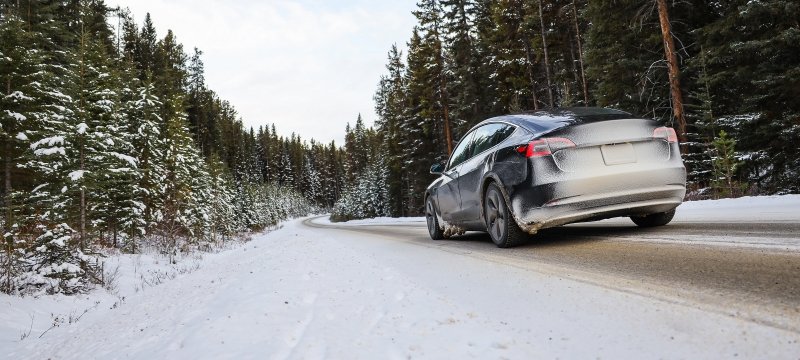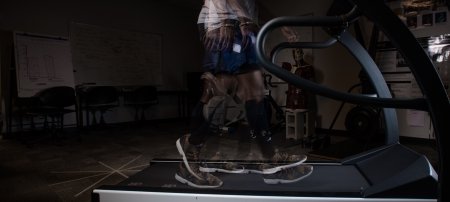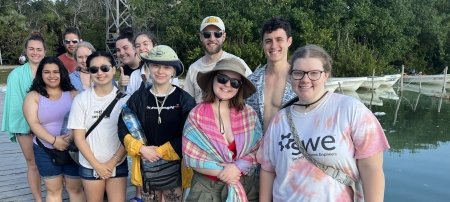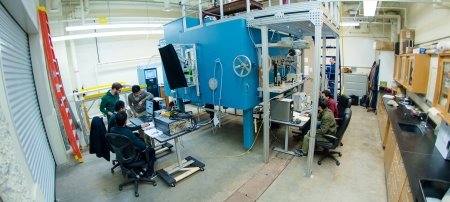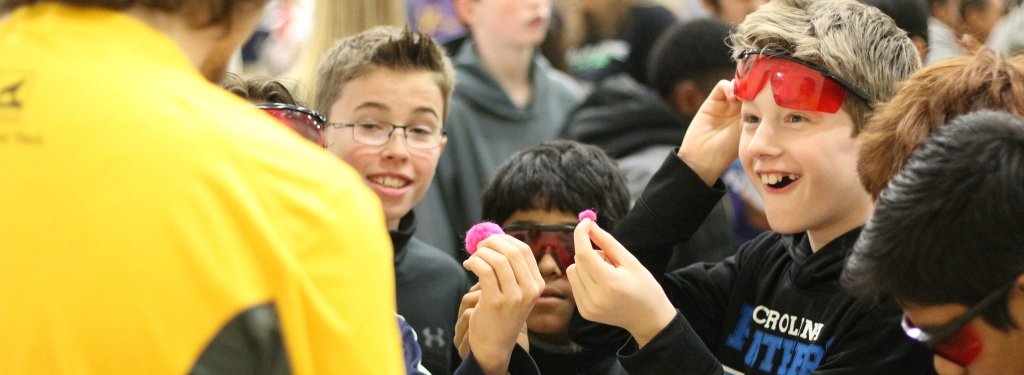Michigan Tech’s research stretches between widely different vistas and technological applications in a vast variety of fields.
The breadth of research led by Michigan Tech scientists, engineers, and scholars takes us from blindingly white, snow-covered roads to budding spring orchards ready to riot into leaves of tender, vibrant green. It reaches from the nanoscale innovations revolutionizing manufacturing to the increasingly technological world of business finance—and to our own living rooms, where at-home exercise helps residents of the Keweenaw (and beyond) toward wellness.
Vehicle Autonomy in Snowy Environs
Huskies are all too familiar with snowy winter roads—but artificial intelligence (AI) isn’t. That means snow, in all its forms, is especially challenging for autonomous vehicles and the many sensors they use to navigate. But where one sensor may be confounded, there’s usually another that can see more clearly. The trick is to teach the sensors to work as a team, coached by AI.
Together with their graduate students, Nathir Rawashdeh, assistant professor of computing, and Jeremy Bos, assistant professor of electrical and computer engineering, are using algorithms to teach the sensors to work together through an AI process called sensor fusion.
“Every sensor has limitations, and every sensor covers another one’s back,” says Rawashdeh.
The team gathered light detection and ranging (lidar), radar, and image data from snowy places around the globe (including the Keweenaw). After cleaning it up and ensuring accurate labeling, they’re using it to teach vehicle AI what snow looks like—and how to fuse data from its sensors to drive snow-covered roads successfully.
Genetic Adaptation for Climate Change
Bud-break is the scientific term for the magic spring moments when a tree’s buds open and tiny new leaves unfurl. Timing is everything for these tender leaves. Emerging too early or too late exposes them to insects, disease, and killing frosts.
With climate change added to the mix, late frosts are more common—and an early bud-break plus a late frost equals disaster for fruit- and nut-bearing trees and grape vines. But since the timing of bud-break is controlled by a tree’s genes, understanding those genetics could help scientists select crop varieties better suited to a region’s climate or adapt trees to be more resilient.
Victor Busov, professor in the College of Forest Resources and Environmental Science, uses molecular genetics and genomics to study tree growth, development and environmental interactions. With colleagues in the US and Sweden, Busov published new research about the genes responsible for early bud-break.
“Once we identify the genes, we do experiments where we dial up or down the expression of the gene,” says Busov. “We look at what the effect of these actions is on offspring. Identifying variation in the network will allow us to regulate early bud-break. New technologies of sequencing are empowering these areas.”
Polymer Nanocomposite Ink: Stronger, Lighter, 3D Printable, and Adaptive
A nanocomposite polymeric ink created at Michigan Tech has the potential to revolutionize the additive manufacturing (aka 3D printing) industry.

A 3D printer extrudes molten polymer epoxy onto a metal surface.
The ink is made of epoxy, nano-clay, and carbon nanotubes (CNTs)—incredibly tiny carbon tubes with extreme strength and lightness—and it has the ability to include other low-dimensional nanomaterials such as graphene, metal nanoparticles, and quantum dots. These nanomaterials allow researchers to 3D-print materials that conduct electricity and heat, store electrochemical energy, or hold a magnetic charge.
Parisa Pour Shahid Saeed Abadi, assistant professor in mechanical engineering-engineering mechanics, explores the interface of materials, mechanics and medicine. She and graduate student Masoud Kasraie explore the processes, morphology, and properties of polymeric inks in their article published in Additive Manufacturing.
Substantial manufacturing impacts aside, the ink’s ability to self-repair has exciting implications for medical, aerospace, and electronics technologies.
“When something breaks, a tiny crack starts from a microscale defect and progresses until it breaks the entire structure,” says Abadi. “Nanocomposite features make bridges in those cracks and don’t let the cracks grow. This is one of the mechanisms through which carbon nanotubes increase the mechanical strength of the material.”
Transparent, Intelligent, Automated Accounting
The accounting information systems (AIS) field has grown tremendously in the last five years, integrating big data, artificial intelligence, blockchain technology, and the Internet of Things to change the way accounting and auditing professions work.
Jun Dai, assistant professor of accounting in the College of Business, is an AIS pioneer working to accelerate and improve accounting processes and replace traditional labor-intensive practices with computer automation and IT systems.
“To many people, the accounting profession means tedious work and long, intense hours,” says Dai. “My research aims to change it to a valued and fun job by using technologies that free accountants and auditors from routine and time-consuming work, as well as to provide investors and managers more accurate, timely and forward-looking information to support financial decisions.”
Dai received the 2021 American Accounting Association Notable Contributions to Accounting Literature Award for her article, “Toward Blockchain-Based Accounting and Assurance.” In it, she explores how blockchain technology could reengineer the existing accounting and auditing procedures to make them more transparent, intelligent, and automated.
Dai believes blockchain—a digital ledger within a protected network where business assets can be traded and tracked quickly and securely—is the future of accounting.
Exercise Promotes Healthier, More Resilient Communities
As the delta variant of COVID-19 spread globally in 2021, MTU graduate students focused on promoting exercise as a form of medicine in the UP to keep our local communities healthier and more resilient.
Led by Steven Elmer, associate professor of kinesiology and integrative physiology, nearly a dozen students worked together to create the free virtual exercise program UP and Moving, which is helping adults stay physically active during the pandemic and beyond.
The students shared their message—that exercise is a critical component of health during the COVID-19 pandemic—through newspaper, radio, podcasts, town hall forums, blog posts, and published infographics.
“We have delivered over 225 home-based workouts to students, staff, and area community members with a wide range of fitness and mobility levels,” write Elmer and graduate student Isaac Wedig in their November 2021 Unscripted guest blog. “These workouts have included aerobic exercise like walking, weightlifting exercise using common household items, yoga, virtual hikes, and more.”
All workouts are available online through UP and Moving’s YouTube channel and website.
Michigan Technological University is a public research university founded in 1885 in Houghton, Michigan, and is home to more than 7,000 students from 55 countries around the world. Consistently ranked among the best universities in the country for return on investment, Michigan’s flagship technological university offers more than 120 undergraduate and graduate degree programs in science and technology, engineering, computing, forestry, business and economics, health professions, humanities, mathematics, social sciences, and the arts. The rural campus is situated just miles from Lake Superior in Michigan's Upper Peninsula, offering year-round opportunities for outdoor adventure.
